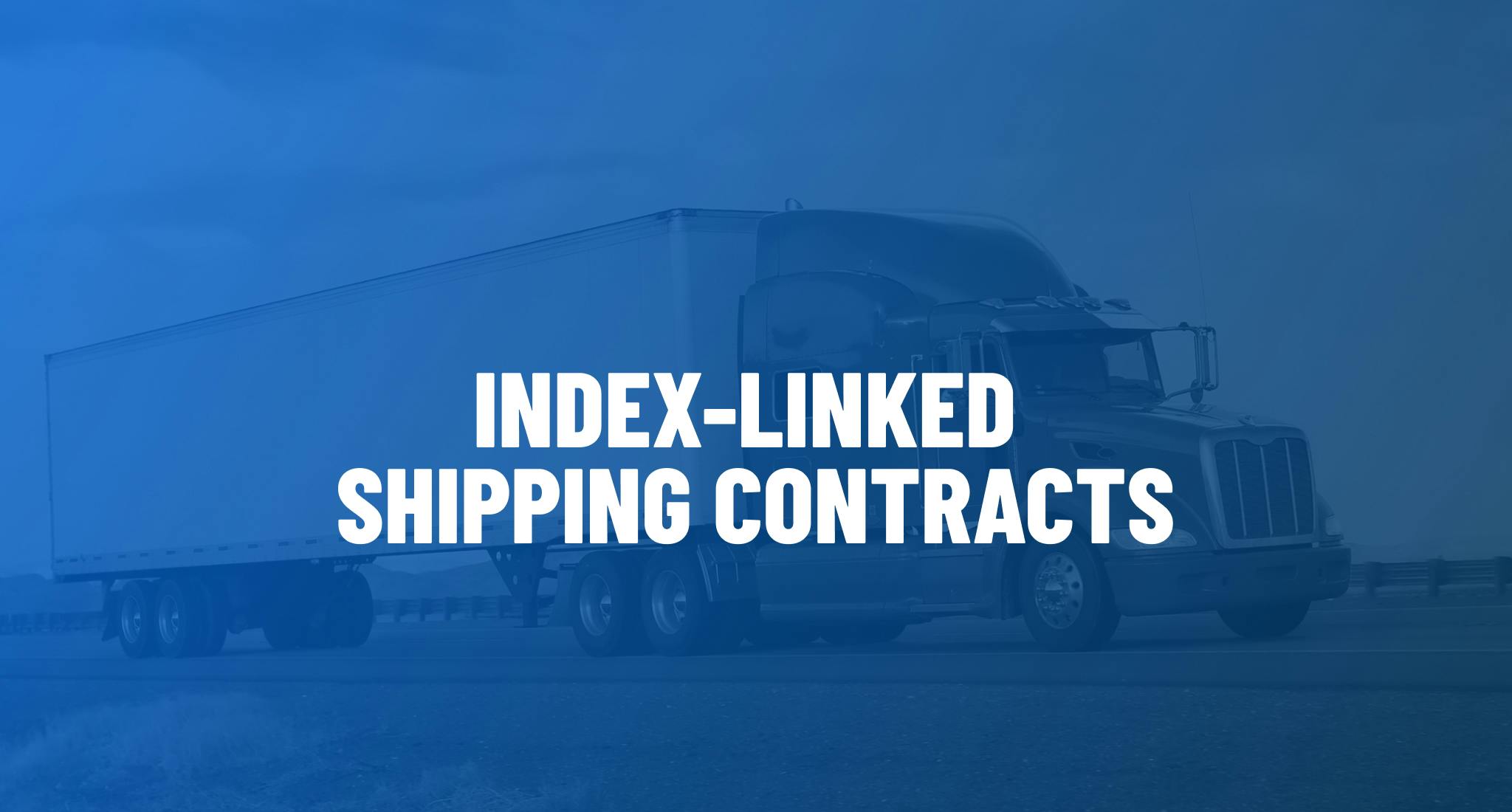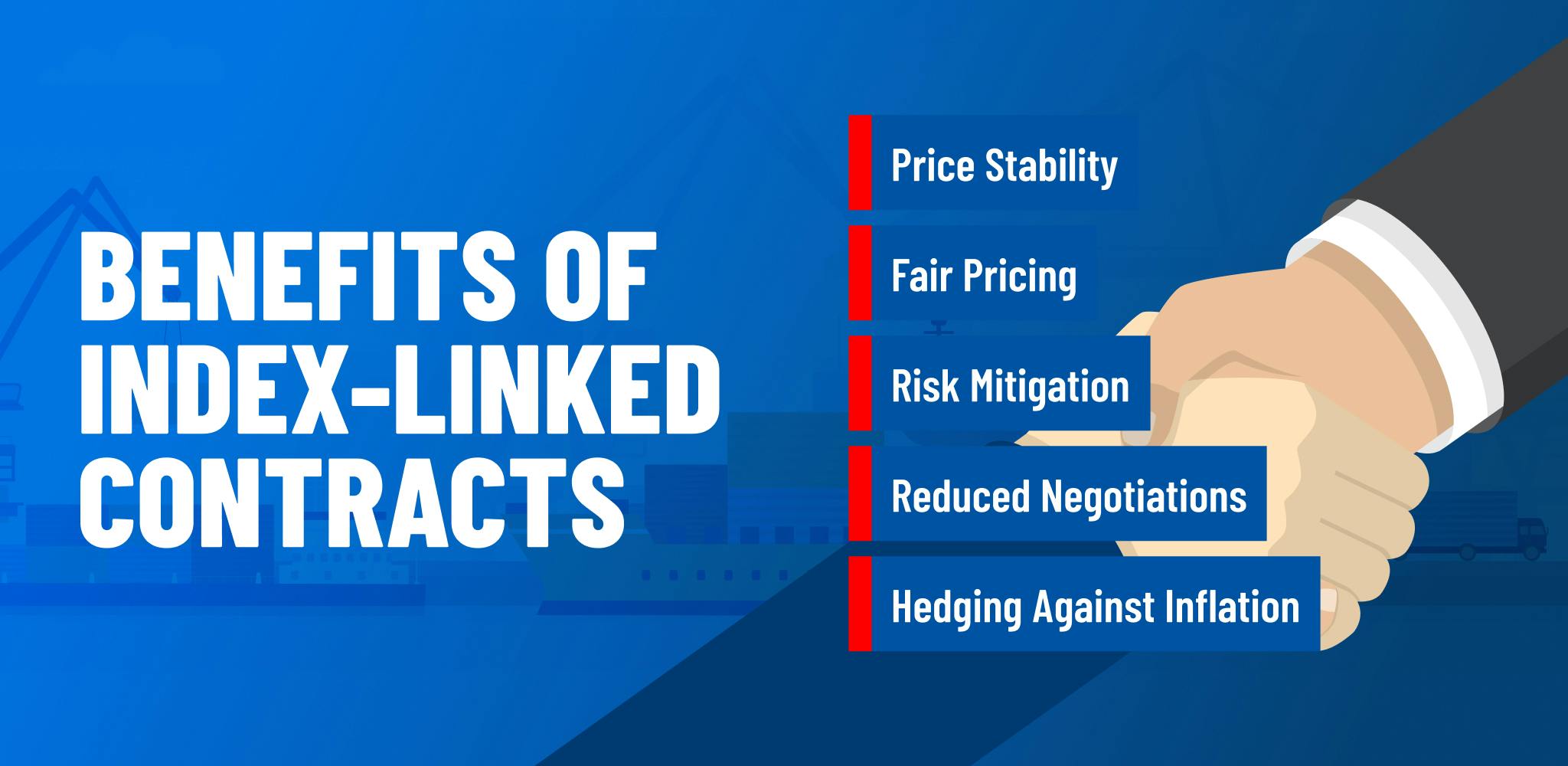Index-Linked Shipping Contracts
January 22nd, 2024

Index-linked shipping contracts make dealing with shipping costs simpler and fairer. They link the price you pay for shipping to a well-known shipping index. This means when the market prices change, so do your shipping costs. It’s a smart way to share the ups and downs of the market between the shipper and the carrier. These contracts are transparent and adjust to real-time market prices, helping everyone involved.
If you’re getting into shipping and logistics, it’s important to know about these contracts. They protect you from sudden changes in shipping prices. By tying the rates to market indexes, these contracts keep things fair – no one gets stuck with too high or too low prices because of market swings.
This article will explore how using index-linked contracts can lead to better, more stable business relationships in the shipping world.
What is a Shipment Contract?
A shipment contract sets the rules for moving goods between a shipper and a carrier. It’s a detailed plan that lists what’s being shipped, how much, and when it should arrive. This agreement is like a roadmap that guides the entire shipping process. It ensures that everyone knows their role, from the moment the goods leave until they reach their destination. Shipping contracts also often spell out payment terms and the delivery schedule so that both sides can agree on the important details.
In a typical shipping contract, you’ll also find specifics about handling the goods, insurance, and what happens if something goes wrong. It’s a safety net for both the shipper and the carrier. If the goods are delayed or damaged, the contract explains how to resolve these issues. These important documents lay at the heart of the shipping and logistics industry.
What You’ll Typically Find in a Shipment Contract
An example of a shipment contract typically includes several key elements:
1. Parties Involved: This section identifies the shipper (the party sending the goods) and the carrier (the party responsible for transportation).
2. Description of Goods: Here, the contract details what is being shipped. This includes the type of goods, quantity, weight, and any special handling requirements.
3. Pickup and Delivery Details: This part specifies the pickup location, delivery destination, and the expected timeline for transportation.
4. Cost and Payment Terms: The contract outlines the cost of shipping, including any additional fees, and the terms of payment (e.g., upon delivery, net 30 days).
5. Liability and Insurance: This section covers who is responsible if the goods are lost, damaged, or delayed. It also details the insurance coverage for the shipment.
6. Special Conditions: Any special requirements or conditions specific to the shipment are noted here, such as temperature control for perishable items.
7. Dispute Resolution: In case of disagreements or issues, this part explains how disputes will be resolved, often including arbitration or legal jurisdiction.
8. Signatures: Finally, the contract is signed by representatives from both the shipping and carrier companies, making it legally binding.
Please note that every shipping contract can vary depending on the specific circumstances of the shipment. It is always advisable to consult with a legal professional before signing any contract to ensure that your interests are adequately protected and that you fully understand the terms and conditions.
What an Index Contract is and Why it is Important
An index contract in shipping is a unique agreement where the freight rates are tied to a shipping index. Unlike typical shipment contracts with fixed rates, these contracts adjust the cost based on fluctuations in the market. This means the price you pay for shipping can change, reflecting the current market conditions. It’s a dynamic approach, aligning the cost with real-time market trends.
This type of contract is important because it offers flexibility and fairness in pricing for both shippers and carriers. When market rates go up, carriers are protected from losses, and when rates fall, shippers benefit from lower costs. Index contracts are a valuable tool for businesses to manage shipping expenses, especially in volatile markets where prices can shift rapidly. It’s a way to ensure that both parties deal with fair and current market rates, avoiding the pitfalls of fixed-rate contracts in an ever-changing market.
Benefits of Index-Linked Contracts

Index-linked contracts in the shipping industry offer a dynamic way to manage freight costs, aligning them with market trends. These contracts bring several advantages, including price stability, risk mitigation, and fairer pricing, making them an attractive option for both shippers and carriers.
Price Stability
Index-linked contracts stabilize shipping costs by aligning freight rates with market indices. Market alignment buffers stakeholders against market fluctuations, leading to more predictable and consistent pricing. Both shippers and carriers benefit from this stability, as it aids in effective budgeting and financial planning, eliminating the unpredictability of fluctuating market prices.
Fair Pricing
The principle of fair pricing lies at the core of index-linked contracts. Freight rates adjust to reflect current market conditions, ensuring a balanced and equitable arrangement. While fixed-rate contracts, can become imbalanced with market shifts, these shipping contracts maintain fairness through market-responsive pricing.
Risk Mitigation
Linking freight rates to a shipping index in these contracts significantly reduces market volatility risks. Sudden price changes become less of a threat, offering a safeguard for both parties. Stability in pricing helps companies increase their financial security in this typically unpredictable market.
Reduced Negotiations
Negotiation frequency diminishes with index-linked contracts. Automatic rate adjustments according to the index eliminate the need for constant price discussions, not only saving time but also streamlining the business process, allowing parties to focus on other critical aspects of their operations.
Hedging Against Inflation
Index-linked contracts act as a defense against inflation’s impact on freight rates. As economic conditions shift, these contracts adjust rates to reflect these changes, protecting both shippers and carriers from inflationary pressures. This adaptive approach ensures that freight rates remain fair and viable over time, even in fluctuating economic landscapes.
How Index-Linked Shipment Contracts Help Buyers and Sellers
Index-linked shipment contracts provide a stable financial framework for both buyers and sellers in the logistics sector. For buyers, these contracts ensure that shipping costs reflect market trends, aiding in accurate budgeting and strategic planning. Sellers benefit from dynamic pricing that adjusts to market conditions, ensuring fair compensation. This model minimizes the risk of financial loss due to market volatility, offering a secure and predictable business environment for both parties.
These contracts also promote a collaborative atmosphere between buyers and sellers by basing rates on an impartial index. This approach reduces subjective negotiations, fostering trust and smoother business relations. It allows both parties to concentrate on service quality and business growth, rather than constant price haggling. In the long run, index-linked contracts contribute to a more stable and efficient market, benefiting everyone involved in the shipping process.
FAQ
What is the difference between a load tender and a rate confirmation?
A load tender is an offer by a shipper to a carrier to transport a specific load, detailing the cargo and requirements. In contrast, a rate confirmation is a document from the carrier to the shipper, agreeing on the price and terms of the shipment. While the load tender initiates the transaction, the rate confirmation finalizes the terms and cost.
What is a freight contract?
A freight contract is a legally binding agreement between a shipper and a carrier, outlining the terms and conditions for transporting goods. It includes details like shipment dates, cargo type, payment terms, and liability clauses. This contract is essential for ensuring both parties understand their responsibilities and the specifics of the transportation service.
What is the difference between proof of delivery and a bill of lading?
Proof of delivery is a document confirming that the recipient has received the shipment as described, often signed upon delivery. The bill of lading, on the other hand, is a legal document issued by a carrier to a shipper, detailing the type, quantity, and destination of the goods being carried. While the bill of lading serves as a contract and receipt, proof of delivery confirms the successful completion of that contract.
Learn More with Hale Trailer
At Hale Trailer, we pride ourselves on being more than just a provider; we’re your dedicated partner in all shipping and logistics endeavors. Browse our blog for a wealth of resources, insights, and tips to guide you through the complexities of the transportation industry.
If you’re ready to get out on the open road, explore our online inventory, where you’ll find a wide range of high-quality trailers for any job, or drop by one of our locations to connect with an expert. Whether you’re just getting started or a seasoned pro, we’re here to help with every stage of your shipping and logistics needs.
All the information on this website – https://www.haletrailer.com – is published in good faith and for general information purposes only. Hale Trailer Brake and Wheel does not make any warranties about the completeness, reliability and accuracy of this information. Any action you take upon the information you find on this website, is strictly at your own risk. Hale Trailer Brake and Wheel will not be liable for any losses and/or damages in connection with the use of our website.
